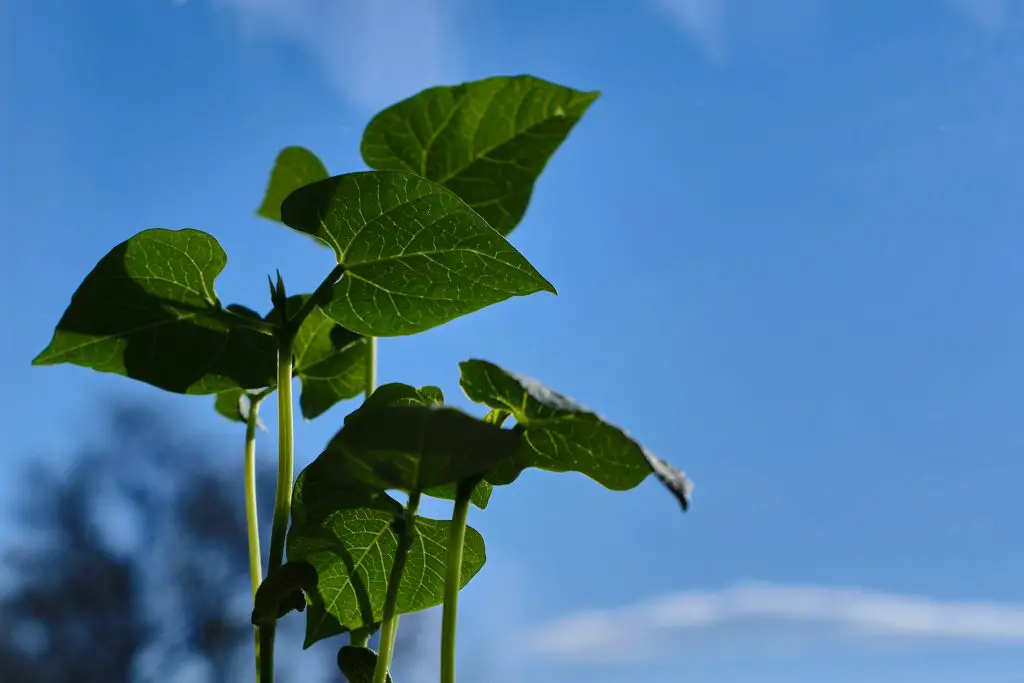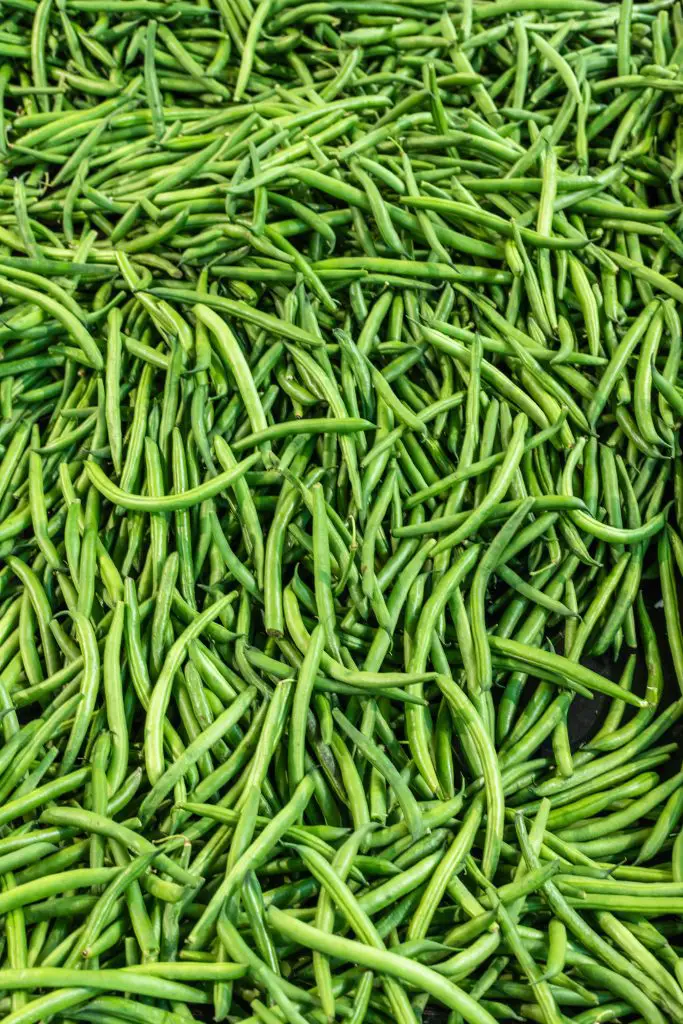How Long Does It Take For Green Beans To Germinate? How Does Temperature Effect It? Green beans are a popular plant to grow at home as they produce masses of pods with relatively little effort. However, one of the common questions that is asked is how long does it take for green beans to germinate?
Green Beans will take approximately 7 to 14 days to germinate at temperatures of 68°F to 95°F (20 to 35°C) according to a study published by the University of California. However, the rate of germination is significantly affected when the temperature falls lower than 59°F (15°C) and the seed will not germinate below 50°F (10°C). A table showing the speed of germination is provided below for reference.
| Days To Germinate | Temperature (°F) | Temperature (°C) |
| – | 32 | 0 |
| – | 41 | 5 |
| – | 50 | 10 |
| 16.1 | 59 | 15 |
| 11.4 | 68 | 20 |
| 8.1 | 77 | 25 |
| 6.4 | 86 | 30 |
| 6.2 | 95 | 35 |
| – | 104 | 40 |
To get an early harvest with green beans the key is to start the plants off early indoors in a seed tray as this will typically advance the plants by approximately a couple of weeks. As you can tell from the table above green beans will simply not grow very quickly when the temperatures are relatively low.
The plant itself is frost sensitive and therefore cannot be transplanted out into the garden until any risk of frost has passed which in many regions means that beans cannot be put into the garden until mid to late spring.

When To Plant Green Beans
To accelerate the rate of harvest the earliest you can plant green beans is around 4 to 6 weeks prior to last frost, which needs to be done in a seed tray. However, if you are planting outside the earliest that you can plant is approximately 2 weeks prior to the last Frost as it will take approximately 2 weeks in the cooler temperatures for the seeds to germinate.
When planting seeds, whether it be in a seed tray or directly into the garden it is recommended that you plant two seeds per cell in a tray or in the case of outdoors 2 seeds per sowing location as this will ensure that you get at least one plant coming up in your desired location.
How To Grow Green Beans
Green beans are easy to grow and I personally recommend starting them in a seed tray as it is generally faster to get them going. To plant the seeds start by filling the seed tray with good quality seed raising mix and ensure that the mixture is firmed into the seed tray to create solid plugs as this will make it easier to transplant the seedlings later on.
As mentioned above it is best to plant 2 seeds per cell at a depth of approximately half an inch to 1 inch depending upon the particular bean you are growing. Generally, larger beans can go a little bit deeper into the soil.
Place the seed tray indoors where it is relatively warm, however, if you live in a relatively cold area it is recommended that you purchase a heated seed propagation tray as this will ensure that the seed are grown at the optimum temperature.
If you were considering purchasing one we recommend that you get one with a removable seed tray and humidity dome as this will increase the longevity of the unit and maximize the temperature around the seedlings. To see the latest price on Amazon click on the link below.
During the early stages of growth, it is important to ensure that the seed tray remains moist as allowing the soil to dry out will significantly affect the seedling’s progress. Seedlings will be ready in approximately 4 to 6 weeks when they have reached a height of approximately 4 inches or so.
At this point it is advisable to plant them out in the garden, however, as mentioned above the plant is frost sensitive so this cannot happen until all risk of frost has passed. If you were growing a climbing variety of beans is important to have the support structure in place prior to the plants going into the ground.
Additionally, it is important to protect the young seedlings from attack from slugs and snails when they go out in the garden so it is advisable to place snail bait around them to avoid having them destroyed it.
In terms of location, beans require a relatively sunny position that gets at least 6 to 8 hours of sun per day, this is important for the plant because it needs to produce flowers before it produces the fruit. However, beans are relatively tolerant of a range of different soil conditions because they are a legume or nitrogen fixer.
This means that the plant is able to draw nitrogen from the atmosphere rather than relying upon it from the soil. But like all vegetables, the plant will always benefit from having additional compost added to the soil before planting.

Once the plant is in position there is relatively little maintenance required as even if it is a climbing variety it does not need to be tied into the support structure. In most cases, the tendrils will find their way up the support structure though on occasion you may need to wrap them around the base of the support structure if they haven’t managed to find it.
As the plant develops you will typically see the development of flowers which in most cases are white, though there are some varieties that produce an orange, purple or red flower. These flowers are quickly followed by pods and the plants will be quite prolific once they get going so it is a good idea once the harvest begins to pick them every couple of days.
The plant will continue to produce pods on an ongoing basis throughout the summer until the weather starts to cool at which point you will see the plant die back completely. To ensure that you have seeds for the following season it is a good idea when clearing the plant to pick any remaining pods and put them in a dry location.
Once the pods have dried out the seeds can be removed from them and saved for the following season if you are growing an open-pollinated or heirloom varieties. Hybrid varieties of seeds cannot be saved for the following year.
I hope you have great success growing your beans at home, if you have any additional questions or comments please leave them in the section below.
Relevant Articles
What Is The Difference Between Dwarf Beans and Climbing Beans?
How Many Green Beans Does A Plant Produce?
Are Bush Or Pole Beans Better?
What Are The Advantages Of Hybrid Seeds Over Open Pollinated Seeds?

